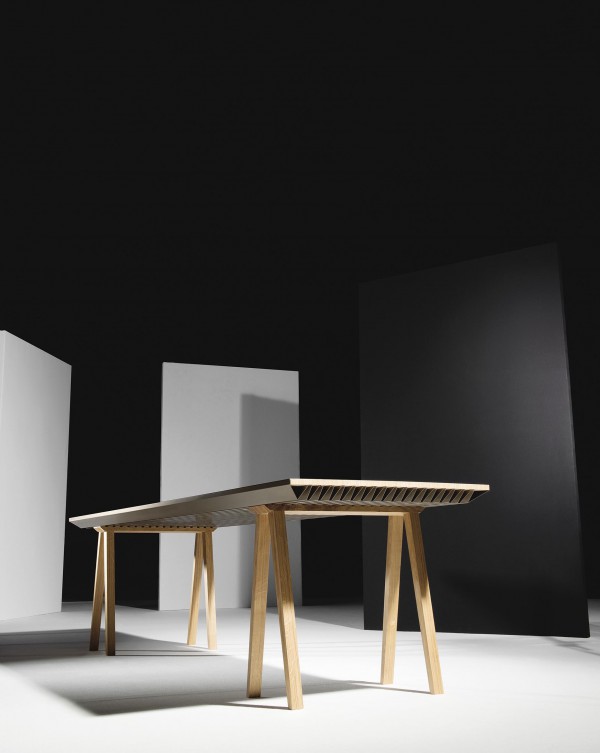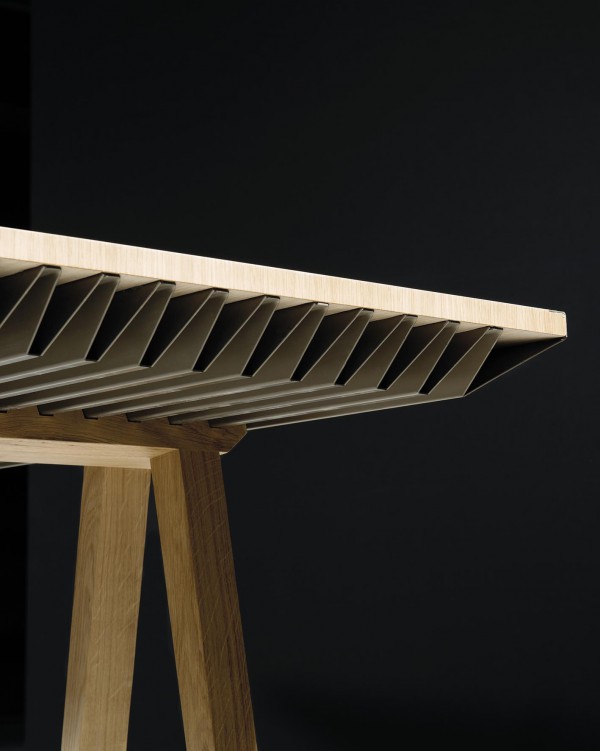Where design meets science
ZEF's sleek Climatic Table offers more than just designer looks - it claims to balance ambient temperatures to reduce aircon requirements by up to 30 per cent…
FRANCE, Paris. As glass becomes ever more prevalent as a feature on superyachts, designers and builders are continually seeking ways to mitigate the build-up of heat in an attempt to reduce aircon loads. However, while specially treated windows or other glass technology is an established route to pursue, few may have thought about another method of onboard climate control - the furniture. Parisian company ZeroEnergyFurniture (ZEF) set out to apply modern materials science to the problem, and combined it with some seriously chic industrial design aesthetics. The result is the intriguing ZEF Climatic Table.
The table was born from a collaboration between architect and engineer Raphaël Ménard and designer Jean-Sébastien Lagrange. On the surface it appears as any other modern, minimal design, with an oak top, corrugated aluminium underside and trestle-style legs. But its secret lies at its heart - within the aluminium underside there is a waxy phase-changing material (PCM) that reacts to temperature. At 71 degrees Farenheit, the PCM begins to soften and starts to absorb excess heat, theoretically keeping the ambient temperature at 71 degrees. Even more interesting is what happens when the temperature drops below 71 degrees - the PCM begins to harden and releases any stored energy as radiated heat.
"The table has a very high thermal inertia," says ZEF. "The waved geometry of the conductive aluminium fosters thermal exchanges between the room and the PCMs." ZEF claims that in a typical office environment with fluctuating interior temperatures, the Climatic Table could save 30 per cent on cooling demand and up to 60 per cent on heating demand.
A critical element revolves around the idea of high temperature fluctuations, and it is this point that suggests the technology might be particularly suited to a superyacht, where the high thermal transition through glass superstructures can potentially create broad temperature ranges from direct sunlight to shade and from day to evening. "We wanted to see if it was possible to address climate and energy issues on a furniture scale," says Lagrange. It looks like ZEF could be sitting pretty with its creation...
NEW: Sign up for SuperyachtNewsweek!
Get the latest weekly news, in-depth reports, intelligence, and strategic insights, delivered directly from The Superyacht Group's editors and market analysts.
Stay at the forefront of the superyacht industry with SuperyachtNewsweek
Click here to become part of The Superyacht Group community, and join us in our mission to make this industry accessible to all, and prosperous for the long-term. We are offering access to the superyacht industry’s most comprehensive and longstanding archive of business-critical information, as well as a comprehensive, real-time superyacht fleet database, for just £10 per month, because we are One Industry with One Mission. Sign up here.
NEW: Sign up for
SuperyachtNewsweek!
Get the latest weekly news, in-depth reports, intelligence, and strategic insights, delivered directly from The Superyacht Group's editors and market analysts.
Stay at the forefront of the superyacht industry with SuperyachtNewsweek






